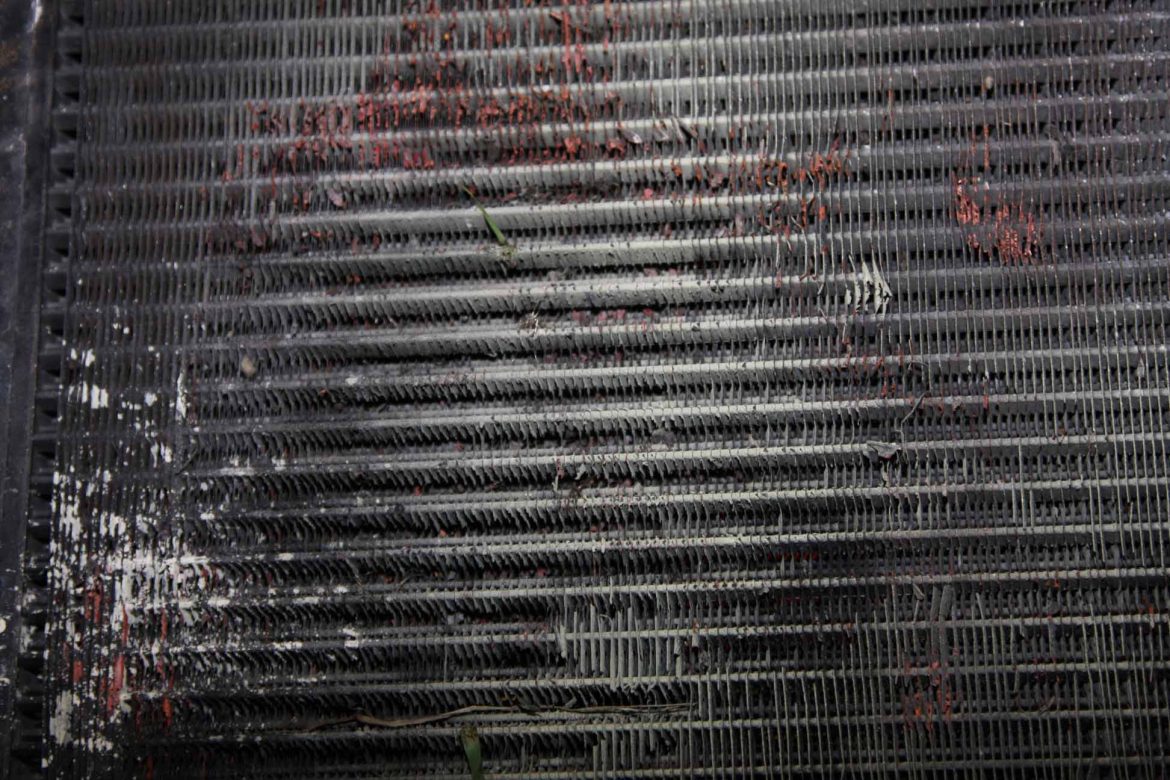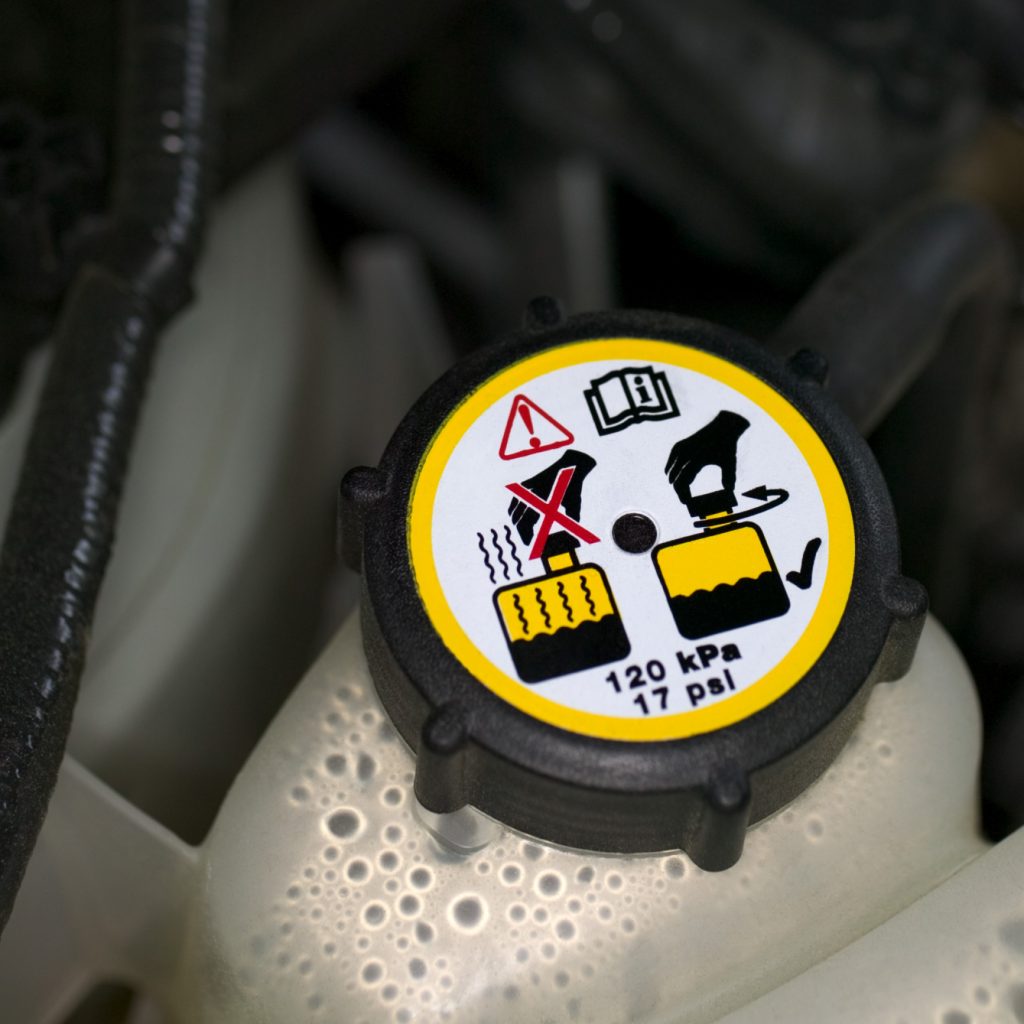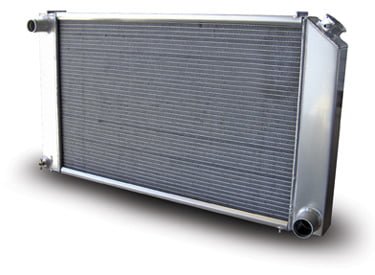As the warmer summer days are becoming fewer and further in between you may be tempted stop thinking about your engine’s cooling system. It only needs to be in tip top shape during the summer months right? It’s true that it’s important for your cooling system to function at its best during the summer, but it’s equally important to have it functioning properly during the cooler months as well.
Why should I do a coolant flush before winter?
- Freeze protection
- Continued protection against over heating
- Reduced thermal stresses by having uniform temperatures around your engine and radiator
- Improved cabin heater efficiency
Depending on the age of your coolant and how it was added to your cooling system, it’s possible that there is not a high enough concentration of antifreeze. Without the proper ratios of antifreeze and water, it is possible that your cooling system may freeze during the winter months on cold nights. Since water expands as it turns into ice it can have catastrophic effects on your cooling system, causing damage and even cracks in your engine. Also, your vehicle uses hot engine coolant to warm the passenger cabin by running the coolant through the heater core and blowing cabin air over it. It is possible that over the summer while not using the heater it may have become blocked, leaving you with only cold air.
Regularly changing your coolant can help avoid many of these problems. Performing a flush of your coolant system each time you change your coolant can maximize the efficiency of your cooling system. Also, it can ensure it stays clean and that all the components are functioning at their intended capacity. Most mechanics recommend a routine flush every 40,000 miles, or you can check your vehicle owner’s manual for recommended coolant change intervals.
How do I perform a coolant flush on my car?
So now that you know it’s important to flush your cooling system, and you can’t remember when the last time it was done, let’s get started. First collect everything you will need for the job:
- Drain pan (if its smaller than your car’s cooling capacity, something bigger to empty it into)
- If you’re like me, a few shop rags or towels
- BlueDevil Radiator Flush (1 bottle treats up to a 12 quart system)

The first step is to drain the coolant that is currently in your vehicle. First, park it on level ground and make sure the vehicle is secure by putting it in park with emergency brake on and blocking the wheels if necessary. On most cars and trucks, there is a drain on the bottom of the radiator usually on one of the end tanks. You may have to remove a skid plate or some plastic panels to access the bottom of your radiator, and this should be done while the vehicle is cool. Many vehicles also have a drain on the engine block as well. This drain is normally on the side of the block and is usually a small valve with a barb for a hose operated by a wrench. Using hoses on these drains can help keep the job clean. A messier but quick way to drain the coolant is to remove the lower radiator hose from the bottom of the radiator. Be ready to catch a lot of coolant very quickly.
 Once you’ve drained as much of the old coolant as you can, close all of your drains and add BlueDevil Radiator Flush to the radiator. Also add enough water to refill the radiator. In the case of severe corrosion (you can see clumps of dirt or metal floating in the coolant you just drained) it may be helpful or necessary to remove your thermostat prior to flushing the system to keep it from clogging and to allow faster coolant flow.
Once you’ve drained as much of the old coolant as you can, close all of your drains and add BlueDevil Radiator Flush to the radiator. Also add enough water to refill the radiator. In the case of severe corrosion (you can see clumps of dirt or metal floating in the coolant you just drained) it may be helpful or necessary to remove your thermostat prior to flushing the system to keep it from clogging and to allow faster coolant flow.
With BlueDevil Radiator Flush and water in the system, ensure the radiator cap is re-installed and start your vehicle. Watch your temperature gauge or warning light closely for signs of overheating during the flush, and ensure the cabin heater is turned on full. Let the vehicle run for 10 minutes after the engine reaches normal operating temperature to ensure the thermostat is fully open. Using caution, you can check to make sure the thermostat is open by checking the upper radiator hose for a rise in temperature.
Turn the vehicle off and let the engine cool. Once it is cool, drain the water as you drained the old coolant through the radiator and block drains or lower radiator hose. Next fill your cooling system from the radiator cap with the manufacturer’s recommended coolant amount and type for the climate you live in. Also, fill the coolant overflow bottle to the “cold full” line. You may need to “burp” your cooling system by leaving the radiator partly full, parking the car on a hill and idling the motor with the radiator cap open. This will allow any trapped air in the cooling system to come out through the radiator cap. Use caution while “burping” the system to avoid any contact with hot coolant.
After a few days, check your coolant overflow tank level and add fresh coolant if necessary. Most coolant is toxic to plants and animals so always avoid spilling it and properly dispose of any coolant and water used to flush your vehicle’s cooling system.
BlueDevil Products can be found on Amazon.com or at AutoZone, Advance Auto Parts, O’Reilly Auto Parts, NAPA, and other major auto parts retailers.
21 responses to "How Often do I Need to do a Coolant Flush?"
21 Comments
Leave a Reply
Related Articles




How often in mileage should I flush my coolant system?
Sam-
Most manufacturers recommended a cooling system flush be done every 40,000 – 60,000 miles. It would be best to check your owners manual or speak with the dealership for recommended service guidelines with your specific model.
Thanks!
-BDP
Hi: I have a 2012 Dodge Ram it has 127000 KMS. on it. I always maintain the oil changes and sometimes change before it is due. The mechanic at the dealer thinks it is due for a transmission oil change, tune up and rad flush costing around $1000.00. It is running fine but do you think I should consider getting the services done that he mentioned non of these services have been done on this truck. We take it on long trips to our cottage in Northern Ontario which is about 850 KMS one way too so there is alot of highway driving. We are going on a long trip to Florida from Ontario in April and wondered if maybe I should consider it.
Some feedback and advice would be appreciated.
Thanks Betty
Betty-
Thank you for asking about your Dodge Ram. Most mechanics recommend flushing the cooling system every 40,000 miles as part of your routine maintenance on the vehicle. Based on your description, we would recommend having the services performed and cooling system flushed. Things such as jellied antifreeze or other foreign substances in the cooling system could restrict the circulation, causing the vehicle to overheat, and causing other issues in the future. Feel free to contact our technical support line at 888-863-0426 with any other questions.
Thank you!
-BDP
Thanks a bunch for any advice.
Hi,when sitting in traffic on a hot day my temperature gauge goes into the red after abt 5-10 mins.do I need to change my coolant.i have a 2004 Ford focus 1.6.
Paul-
Yes, it is a good idea to keep up with the routine maintenance of your cooling system to keep the system clean and free of restriction. It would be a good idea to flush your cooling system using BlueDevil Radiator Flush (http://store.gobdp.com/radiator-flush-00204/) and refilling your cooling system with fresh antifreeze on a regular basis.
Due to how quickly the engine is wanting to overheat we also recommend that you have a “block dye test” done. The “block dye test” will test for combustion/exhaust gases being present within your cooling system. If the test shows that these gases are present then you likely have a blown head gasket or cracked block. If this is the case then you can potentially try BlueDevil Head Gasket Sealer (http://store.gobdp.com/head-gasket-sealer-38386/) to repair it.
Feel free to contact us at 888-863-0426 with any questions.
Thank you!
-BDP
My car drives fine during the winter and starts right up every time..however wherever it gets hot out it’s doesn’t start sonetime..and then after2 to3 tries it starts but then it seems like it’s going to cut off. Pls advise
Sandy-
Please contact our technical support line at 888-863-0426 so that we can get a better understanding of the vehicle’s condition and be able to make any appropriate recommendations.
Thank you!
-BDP
Hello,
My 2013 Subaru Impreza Base 2.0 CVT has 22,000 miles on it. The Owner’s Manual suggests that the initial coolant replacement can be at 11 years or 137,500 miles; and every 6 years/75,000 miles thereafter.
Can I really wait that long to replace the coolant? What would you recommend?
Thanks.
Doug
Doug-
Thank you for asking about your Subaru Impreza. Different manufacturers recommend changing the coolant at different intervals. Some manufacturers recommend changing coolant as early as 60,000 miles. If your coolant appears dirty or has foreign substances floating around, then it would be a good idea to change it before the recommendation period. If not, you should be safe in following the manufacturer’s recommendations as laid out in your owner’s manual.
Thank you!
-BDP
A retired mechanic told me not to get a radiator flush due to the sentiment that sits at the bottom of the radiator. He said that a flush can kick that stuff up and send it to other parts of the engine, creating more problems.
Rick,
Thanks for your question about doing a radiator flush. If done correctly, a radiator flush should remove all the sediment from your radiator and engine. Before adding BlueDevil Radiator Flush, it’s important to completely drain your system of all the old coolant and flush it with clean water. If you believe you have a lot of sediment in your cooling system, you can do this flushing with the upper and lower radiator hoses removed from the radiator and the feed and return lines removed from your heater core to ensure all the sediment and gunk doesn’t get into your engine.
Thanks again for your question!
-BD Auto Pro
If I do a radiator flush do I still need to get my radiator rod out or the flush will will alone will solve the problem?
Carl-
It depends on what you are trying to clear out of the cooling system. If the radiator is dirty form normal wear and tear due to old antifreeze etcetera then BlueDevil Radiator Flush should work well to clear it out.
Thank you!
-BDP
Our 2013 Taurus just had it’s check up and the gal at the counter said we need a coolant flush because it’s only cooling to +45 degrees. She said there is too much water and that maybe we put water in it–we never have touched it. Could the coolant ratio be off because the coolant is old? Thank you, Barb
Barbara,
Thanks for your question about your 2013 Ford Taurus. It is definitely possible that your coolant is not offering low enough freeze protection because it is old. This time of year we definitely recommend making sure your cooling is safe down below zero degrees to keep things safe and if you are already draining and refilling your cooling system, it’s a great time to flush the system as well as it will save some money in labor and coolant. Flushing your cooling system is also a job you may consider doing yourself. Check out our how-to article here: https://gobdp.com/blog/how-to-flush-a-radiator/
I have a coolant leak in my 2009 Saturn Vue. How can I find out where the leak is?
Wes-
A pressure test could identify the location of your coolant leak. Some leaks are easily identified by merely checking underneath the vehicle to see where the drip/seep is coming from. If you are unsure, you may want to bring the vehicle into a certified ASE mechanic for a proper diagnosis.
Thank you!
-BDP
How can I get the drain plug out to drain my 2006 nissan sentra radiator and the drain plug broke off inside.
Alysa-
Thank you for asking about your Nissan Sentra. There are a few videos online you can check out to help with removing a broken drain plug from the radiator. If the task seems too daunting, we recommend bringing the vehicle to a mechanic. You wouldn’t want to drive the vehicle too long with a coolant leak, however, if the shop is close, you may be able to bring the vehicle yourself as long as you keep topping off the coolant.
Thank you!
-BDP